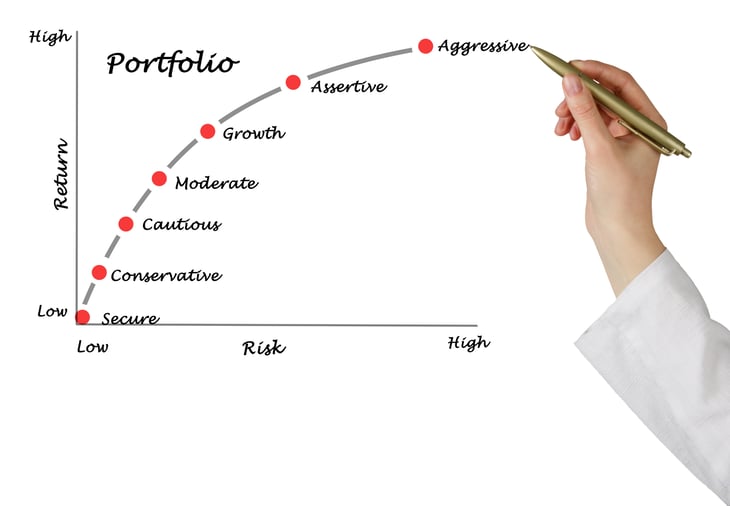
Editor's Note: This story originally appeared on SmartAsset.com.
Asset allocation means the mix or range of investments you hold in a portfolio. It’s one of the most basic investing terms to know and also one of the most important.
Choosing the best asset allocation for your needs can make a difference when it comes to achieving your long-term financial goals. There are different ways to approach building an investment portfolio, and your choice of assets may depend largely on your age, risk tolerance and what you hope to achieve.
The choices available to investors as they seek the best asset allocation are vast, so working with a financial adviser to get the right mix can really pay. Understanding the different options can help you decide on the best asset allocation for your needs.
Following is a look at several asset allocation models and how to pick the best one for you.
Asset Allocation Definition

Asset allocation simply means how you allocate assets in a portfolio. In other words, it’s what you invest in. For example, some of the most common assets include stocks, bonds, mutual funds and real estate.
A portfolio’s asset allocation is not the same as its asset location. Asset location refers to where you hold your assets. So, for instance, that could include holding investments in a 401(k) plan at a work, in an individual retirement account (IRA) or in a taxable brokerage account.
Why does asset allocation matter? For one important reason: diversification. When you diversify investments you spread risk around. So if some of your investments underperform or take a hit from market volatility, you have other investments to balance them out.
When it comes to the best asset allocation, there’s no single option. Again, what you choose can be based on your investment goals or objectives, your time horizon for investing, how much risk you’re comfortable with and how much risk you need to take to reach your goals.
If you’re new to asset allocation, it helps to understand some of the most basic models.
60/40 Portfolio

The 60/40 portfolio dictates a simple split of your assets — 60% for stocks and 40% for bonds. This asset allocation is simple to apply and understand, which may appeal to investors who prefer more of a hands-off approach.
You have a chance at earning steady returns through the stock portion of the portfolio but you have a sizable chunk of bonds to balance that out.
The downside, of course, is that a 60/40 portfolio may not be suitable for people who have higher risk tolerance. If you’re investing in your 20s, for example, you have more time to recover from market fluctuations and can typically take on more risk. And if you do so, you could be rewarded with higher returns.
80/20 Portfolio

An 80/20 asset allocation is similar to the 60/40 portfolio. But instead of holding 60% of your assets in stocks, you increase that to 80%. This portfolio model involves more risk since you’re holding a larger proportion of stocks. But you could enjoy better returns over time.
Age-Based Asset Allocation

Age-based asset allocations use your age as a guideline when deciding how much to allocate to stocks versus bonds. For example, there’s the rule of 110. This rule says to subtract your age from 110, then use that number as a guideline for investing in stocks.
So if you’re 30 years old you’d invest 80% of your portfolio in stocks (110 – 30 = 80). The rule of 110 is increasingly giving way to the rule of 120, however, as investors are living longer. With this rule, you use 120 in place of 110. So again, if you’re 30 years old, you’d invest 90% of your assets in stocks (120 – 30 = 90).
Age-based asset allocation is simple enough to apply. But it’s important to consider whether using this kind of rule aligns with your investment goals and the amount of risk you’re comfortable taking on.
100% Asset Allocation

Another option for the best asset allocation is to use the 100% rule and build a portfolio that’s either all stocks or all bonds. This rule gives you two extremes to choose from: high risk/high returns or low risk/low returns.
Whether it makes sense to go all-in on stocks or bonds can depend on what you’re trying to do with your portfolio. If you’re 25 years old and have another 40 years to invest, for example, then you may not panic at the idea of investing all your money in stocks.
On the other hand, if you’re 65 or older then concentrating more of your money on bonds and similar fixed-income investments could make sense.
3-Fund Portfolio

A three-fund portfolio is another asset allocation model that keeps things simple. With this type of asset allocation, you’re building your portfolio around three funds. Typically, this means investing in one each of:
- A U.S. stock market index fund
- An international stock market index fund
- A U.S. bond market index fund
The idea behind the three-fund approach is that you can use three funds to cover all your investment bases to maximize returns and minimize risk. Index funds track the performance of an underlying benchmark, such as the S&P 500. So assuming you choose index funds that track a reliable benchmark, you may be able to count on consistent returns over time.
Target-Date Fund Allocation

Target-date funds have an asset allocation that’s based on your target retirement date. As you get closer to retirement, these funds automatically rebalance to manage risk.
If you have a 401(k), chances are you’re invested in at least one target-date fund as these investments are very popular with workplace plans. The upside is that these funds are “set it and forget it” — all you have to do is choose the one that’s closest to your target retirement date.
But in terms of performance, target-date funds may not allow for enough risk-taking to deliver the returns you’re after. And some of them can carry steep fees.
Goals-Based Allocation

One final way to allocate assets involves looking at your goals. For example, if you’re a younger investor you might be mainly interested in growth. So you could invest assets in growth stocks, growth mutual funds or growth exchange-traded funds (ETFs). On the other hand, if you’re more focused on income then you might lean toward dividend-paying stocks, bonds or bond funds and ETFs.
A third option is to split the difference and choose a balanced approach. So going back to previous asset allocation models, you might choose a 60/40 portfolio or even a 50/50 split between stocks and bonds.
How to Choose the Best Asset Allocation

Finding the best asset allocation comes down to knowing yourself as an investor and what you need your portfolio to do. So again, consider things like:
- How long you have to invest
- How much risk you’re comfortable with
- Your end goals for investing
- What degree of risk you need to take to reach your goals
- Where you plan to hold different investments
Also, consider the fees involved. For example, if you’re investing in mutual funds or ETFs, it’s important to check expense ratios. This is what you’ll pay to own the fund on a yearly basis. Over time, expense ratios can nibble away at your investment returns.
If you’re trading individual stocks or ETFs in a brokerage account, look for one that charges zero commissions for these transactions. More online brokerages have adopted a no commission fee model but some do still charge fees.
Finally, remember that your asset allocation is not set in stone. As you grow older and go through different life stages your needs and goals may change. So it’s important to review your portfolio’s asset allocation at least once a year to make sure you’re still on track with where you want and need to be.
The Bottom Line

Picking the best asset allocation is key to maximizing returns and minimizing risk as you invest. If you don’t get the mix right, you could miss out on some opportunities to earn returns.
Or, you could take on too much risk and end up losing your savings without enough time left to earn it back. This is a decision you can’t afford to skip or delay. The sooner you begin tailoring your portfolio to your particular needs, the sooner you can get on the path to reaching your investment goals and building wealth.





Add a Comment
Our Policy: We welcome relevant and respectful comments in order to foster healthy and informative discussions. All other comments may be removed. Comments with links are automatically held for moderation.